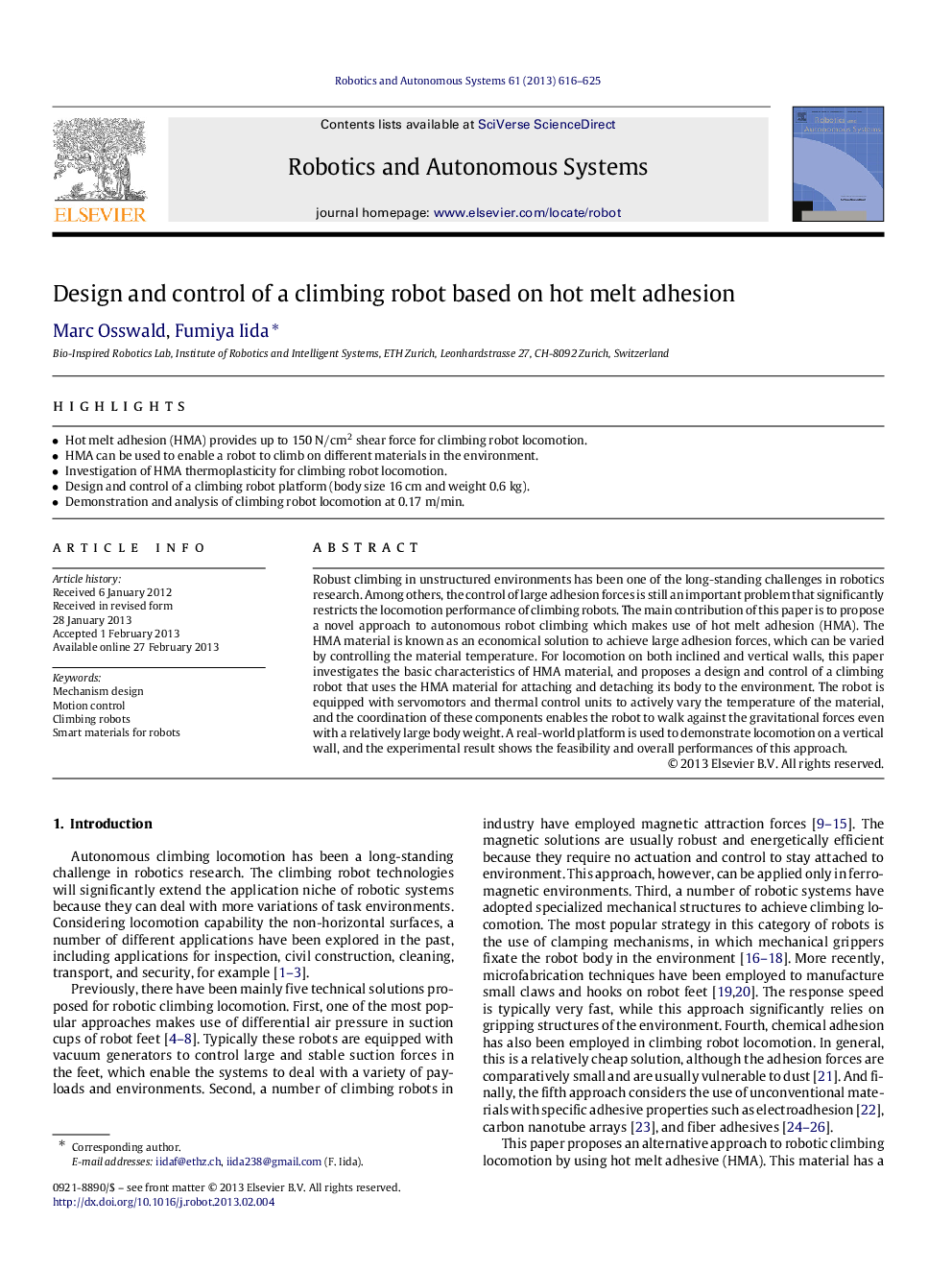| کد مقاله | کد نشریه | سال انتشار | مقاله انگلیسی | نسخه تمام متن |
|---|---|---|---|---|
| 412743 | 679679 | 2013 | 10 صفحه PDF | دانلود رایگان |

• Hot melt adhesion (HMA) provides up to 150N/cm2 shear force for climbing robot locomotion.
• HMA can be used to enable a robot to climb on different materials in the environment.
• Investigation of HMA thermoplasticity for climbing robot locomotion.
• Design and control of a climbing robot platform (body size 16 cm and weight 0.6 kg).
• Demonstration and analysis of climbing robot locomotion at 0.17 m/min.
Robust climbing in unstructured environments has been one of the long-standing challenges in robotics research. Among others, the control of large adhesion forces is still an important problem that significantly restricts the locomotion performance of climbing robots. The main contribution of this paper is to propose a novel approach to autonomous robot climbing which makes use of hot melt adhesion (HMA). The HMA material is known as an economical solution to achieve large adhesion forces, which can be varied by controlling the material temperature. For locomotion on both inclined and vertical walls, this paper investigates the basic characteristics of HMA material, and proposes a design and control of a climbing robot that uses the HMA material for attaching and detaching its body to the environment. The robot is equipped with servomotors and thermal control units to actively vary the temperature of the material, and the coordination of these components enables the robot to walk against the gravitational forces even with a relatively large body weight. A real-world platform is used to demonstrate locomotion on a vertical wall, and the experimental result shows the feasibility and overall performances of this approach.
Journal: Robotics and Autonomous Systems - Volume 61, Issue 6, June 2013, Pages 616–625